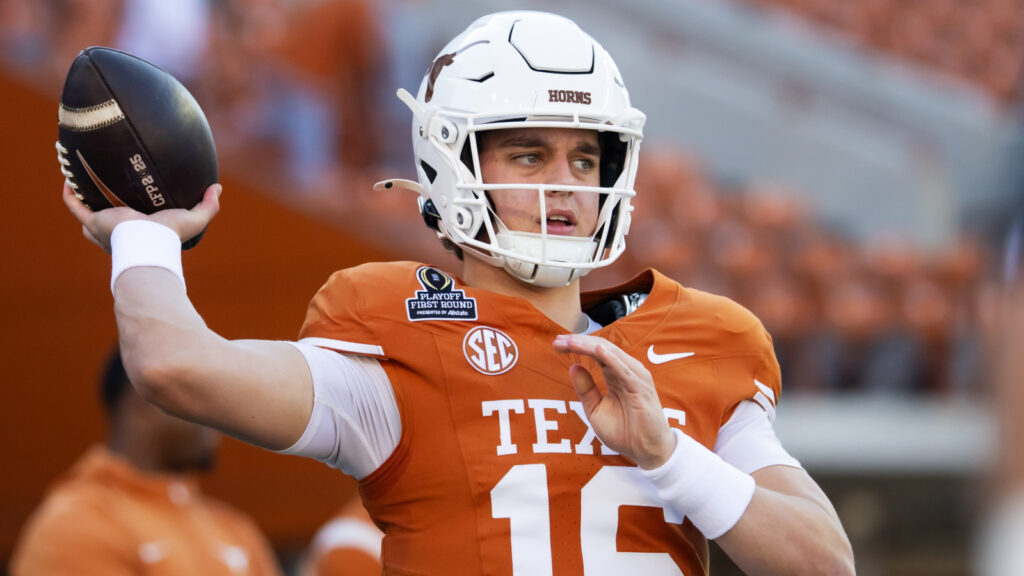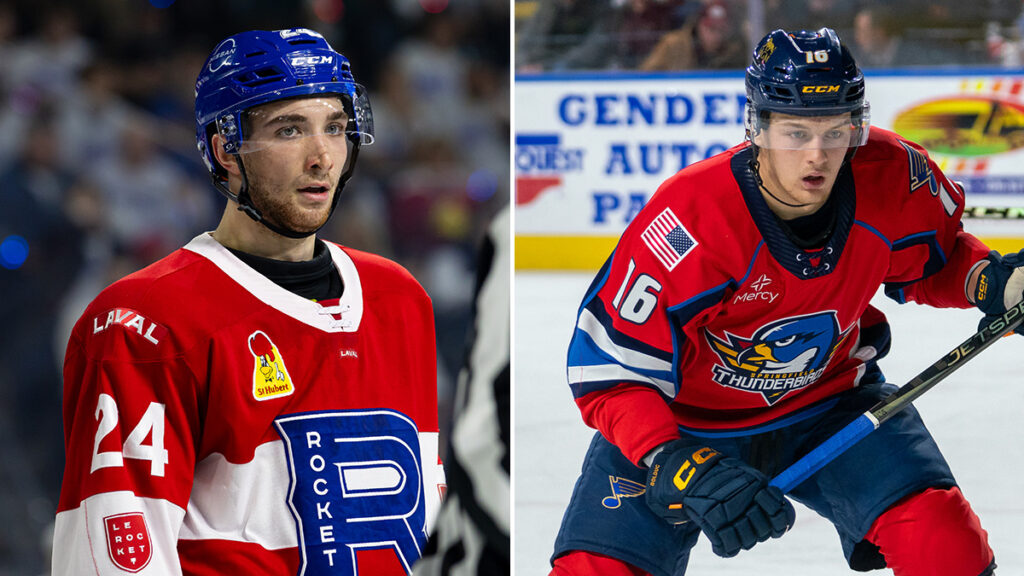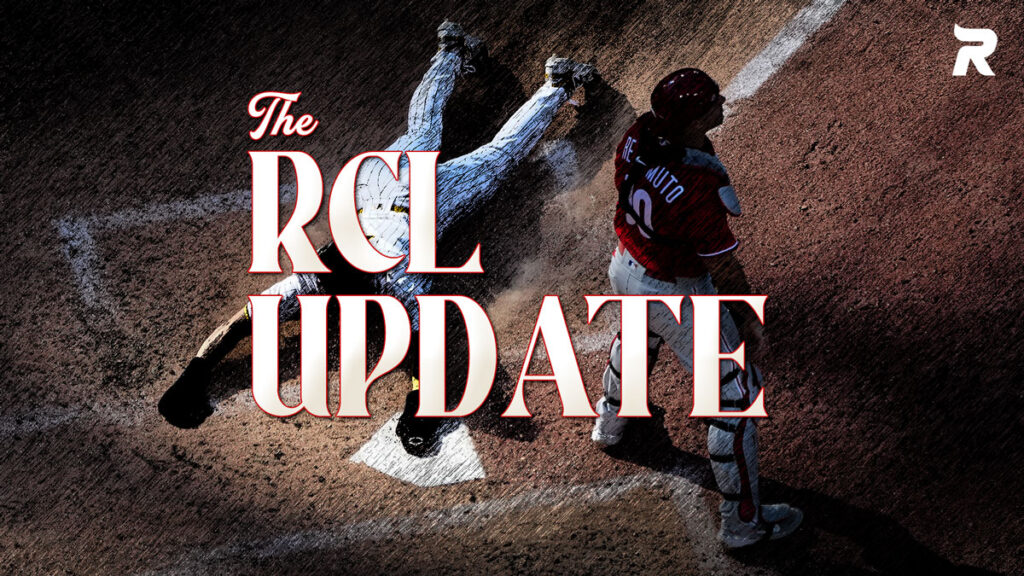Welcome back to Bracket Breakers, where we analyze and predict NCAA Tournament upsets using our statistical model Slingshot, developed with the help of the Furman University Mathematics Department. Today, we’re going to continue our hunt for Cinderellas by looking at the 10 smaller conferences that hold their tournaments next week.
There are three conferences where Slingshot doesn’t give any team even a 5 percent chance of beating an NCAA Tournament opponent seeded at least five slots higher: the Big West, MEAC and SWAC. UC San Diego — which has gone 14-4 in Big West play, currently sits in second place in its conference standings and lost to San Diego State by just a point in December — does earn an Underdog Rating of 9.0 (on a scale of zero to 100) from our model. But the Tritons moved from Division II to D-I “just” four years ago, so they are still playing under the NCAA’s absurd reclassification rules. Like St. Thomas (and Merrimack in 2023 and Bellarmine in 2022), UCSD is ineligible for the postseason.
In two more conferences, the team we see as the best NCAA longshot is in first place and already heading toward an automatic bid: Akron (7.6) in the MAC and Grand Canyon (20.5) in the WAC. If NCAA bracket carnage is what you want, root for these squads to keep winning. And if the 26-4 Antelopes aren’t on your radar screen yet, start tracking them: With the 25th-best offensive rebounding in the country and wins over San Diego State and San Francisco, they’re a legit underdog threat.
So we’ve got five more conferences where the picture is mixed or the top teams are very closely bunched. These are cases where longshots have to win next week to earn the chance to take down the top seeds in the field of 68. Here are teams to pull for in their tournaments:
American loaded with potential Cinderellas
Florida Atlantic Owls (Underdog Rating: 43.4)
SMU Mustangs (UR: 40.5)
North Texas Mean Green (UR: 26.5)
Memphis Tigers (UR: 21)
South Florida Bulls (UR: 9.6)
The first-place team in the American is South Florida, which owns a 16-1 conference record and No. 24 national ranking. But Slingshot sees their level of success as a fluke: Our model’s basic power ratings peg the Bulls as just the fifth-best team and sixth-best Bracket Breaker in the conference. That feels like a harsh judgment for a team that has won 21 of its last 22 games, but the numbers are the numbers. And KenPom.com agrees — the Bulls are 26th in the nation in “luck” (an indication that their underlying metrics don’t support their gaudy record). USF’s Underdog Rating is just 9.6: Although the Bulls take an above-average number of threes and force turnovers on 18.8 percent of opponents’ possessions, they are hampered by poor rebounding at both ends.
Meanwhile, the AAC actually offers several outstanding underdog options. Start with Florida Atlantic. Last season’s surprise Final Four participant actually sports an even more impressive bracket-breaking profile this year. The Owls are excellent offensive rebounders (34.2 percent of missed shots), generate steals on 10.4 percent of opponents’ possessions and rank 18th in the country in adjusted offensive efficiency. Plus, our model sees them as just a really good team: Their basic power rating is boosted by wins over Arizona, Texas A&M, Butler and Virginia Tech. Recent losses to UAB, South Florida and Memphis have moved them closer to the bubble than they would like, but if they reach the tourney, they’ll be exceptionally dangerous again.
SMU has a similarly strong case to make. The Mustangs have a 40.5 Underdog Rating, buoyed by a deadly combination of offensive rebounding (38.6 percent, fifth in the nation) and pressure defense (12.3 percent steal rate, 20th). They’ve lost three straight and will likely have to win the conference tournament to secure an NCAA bid, but they’d be a nasty first-round foe if they get in. The same goes for North Texas (26.5) and Memphis (21). Memphis still has a shot at an at-large bid and plays the possession game nearly as well as SMU, with above-average stats in offensive rebounding and forced turnovers. North Texas excels in those categories as well, while also playing at one of the slowest paces in the country, but struggles to hold onto the ball or keep opponents off the offensive boards.
One thing’s for certain: We at Bracket Breaker Central will be glued to this conference tournament, and will hold out hope for multiple bids on Selection Sunday.
Mountain West Conference has one shining value play
New Mexico Lobos (Underdog Rating: 33.2)
By anyone’s standards except ours, the Mountain West has had a spectacular season: The conference will probably send six teams to the NCAA Tournament, and five of them could wind up in the upper half of bracket seedings. But none of them carry the statistical profile of successful underdogs. In fact, Slingshot estimates that beyond San Diego State, each of the MWC’s candidates would underperform as an NCAA longshot. The entire group just isn’t accustomed to high-risk/high-reward styles of play. Looking at combined stats from intra-conference games, the Mountain West ranks 20th among all conferences in offensive rebounding percentage and 13th in 3PA/FGA, and none of its members have forced turnovers on more than 18.7 percent of opponent possessions.
The best bet comes from an underappreciated pack of wolves. New Mexico has outscored its opponents by 21.5 points per 100 possessions after adjusting for their schedule strength, according to our model. That makes the Lobos the second-strongest team in the MWC and No. 25 in the country. KenPom puts them at No. 3 in the MWC and No. 36 overall; NET says No. 3 and No. 29. There’s a difference of less than 1 point per 100 possessions between New Mexico and Colorado State in our basic power ratings and just under two between the Lobos and Boise State. But Boise State and Colorado State will probably land around the No. 8 line in the NCAA Tournament, while New Mexico looks to be in line for a No. 11 seed. The Lobos have been sliding because they’ve lost five of their past eight games, two by excruciatingly close margins. But that gap isn’t justified by their full-season performance.
As long as it exists, New Mexico is a straightforward value play. Richard Pitino’s squad, which has been dealing with injuries all season, is top 40 on offense and defense. The Lobos’ guards are just outstanding: Donovan Dent, Jaelen House and Jamal Mashburn Jr. are all scoring at least 15 points a game, and House and Tru Washington are both averaging more than 4 steals per 100 opponent possessions. And their best bet to play as a first-round NCAA underdog is to stay exactly where they are. The Mountain West getting six teams into the tournament may just be confusing enough to get us a good old-fashioned mis-seeding.
Atlantic 10 is a jumble
UMass Minutemen (Underdog Rating: 15.7)
St. Bonaventure Bonnies (UR: 14.9)
Saint Joseph’s Hawks (UR: 12.7)
Dayton has played well enough this season that the Flyers have probably nailed down a No. 6 or No. 7 seed in the NCAA Tournament. They’re 23-6, with one loss to Houston and five to other opponents by a combined 21 points. It’s Richmond, however, that leads the A-10 by a game over the Flyers and Loyola Chicago, and stands to earn the conference’s automatic bid. Problem is, Richmond ranks 362nd in the NCAA in offensive rebounding percentage, grabbing only 17.1 percent of its own missed shots. That’s 362nd out of 362 D-I programs.
Look, there are plenty of ways to compete without emphasizing the offensive boards, and Chris Mooney has won more games at Richmond than any other coach. But there’s just no record of a longshot with anything like those numbers pulling off an upset in the NCAA Tournament. To overcome a superior opponent’s shooting, an underdog needs to build possessions — and take some chances doing so. If you walk the ball up the court deliberately, protect it exceptionally well, pass accurately inside and hit threes that open up, you can beat VMI and Siena and Queens University of Charlotte and William & Mary and Buffalo and Lafayette. And, well, that’s most of Richmond’s non-conference wins. But that style won’t work against Auburn or Marquette. Slingshot estimates Richmond would underperform against an NCAA Tournament favorite by a whopping 8.7 points per 100 possessions and assigns the Spiders an Underdog Rating of just 4.7.
Loyola (4.1) fares even worse: The Ramblers also forgo offensive rebounding (ranking 291st) and turn the ball over on 18.8 percent of possessions, a rate far worse than Richmond (ranking 289th). They’re a top-100 team in shooting from inside and outside but barely a top-200 offense overall.
So give us literally almost anyone else from the A-10. UMass (15.7), now coached by Frank Martin, hits the offensive glass and forces turnovers. St. Bonaventure (14.9) keeps things slow and has three players shooting 39 percent or better from behind the arc. Saint Joseph’s (12.7) ranks 11th in the nation in 3-point shots as a percentage of field-goal attempts. The main building on the campus at Fordham (5.4) is named Keating Hall. Slingshot says there are nine teams in the A-10 whose basic power rating is between 7 and 12 points per 100 possessions better than average, which should make for an entertaining tournament. Hopefully one of them will rescue the conference from squandering its second bid on an experiment in risk aversion.
Pair of Ivy Leaguers could be dangerous
Princeton Tigers (Underdog Rating: 15.8)
Cornell Big Red (UR: 15)
The Ivy League has been a neck-and-neck race all season long — not just in the standings but in the quest to be the top underdog. Princeton’s win over Cornell not only knocked the Big Red out of a three-way tie for first place (the Tigers and Yale are 11-2; Cornell is 10-3); but also helped vault the Tigers (15.8) ahead of the Big Red (15) in Slingshot’s ratings.
What’s interesting, though, is how those two teams get to an overall rating that is nearly identical. Princeton is simply the better team. The Tigers own a healthy lead over Cornell in both our basic power ratings and KenPom’s, where Princeton ranks 63rd and Cornell 101st. But the Tigers are no schoolyard bully: They use several important strategies that are the hallmarks of successful underdogs. In particular, they rank third in the country by taking 50.7 percent of their shots from 3-point range, play deliberately (335th in tempo), never turn the ball over (12.2 percent turnover rate, first in the nation) and keep foes off the offensive boards (35th in the nation). That’s a damn good underdog résumé.
But Cornell plays an even more upset-friendly style, as they take nearly as many threes (48.4 percent of shots, eighth in the country) and add in a healthy dose of turnovers (18.7 percent of opponents’ possessions, 83rd nationally). Chris Manon is a disruptive force, ranking fourth in the country in steal percentage (5.7 percent).
The biggest lesson to take from this tight race? Both Cornell and Princeton would be significant upgrades over Yale as a potential Bracket Breaker. Credit the Bulldogs for another fantastic season under James Jones. But they just don’t excel in any of the key areas — 3-point shooting, offensive rebounding, forcing turnovers — that our model likes to see from top-notch Bracket Breakers. If you’re rooting for upsets in the tourney, root for Princeton or Cornell to emerge as the Ivy League champ.
Hear us out on this last one: Iona for the MAAC
Iona Gaels (Underdog Rating: 9.6)
Wait, how does the sixth-place team in the country’s 24th-best conference make this list? For starters, Iona is better than its sub-.500 record. They’ve gone a very unlucky 2-7 in close games, and our model sees them as the second-best team (behind Fairfield) in the MAAC. But Slingshot thinks the Gaels could overperform against an NCAA Tournament favorite basically because they rank ninth in the country with steals on 13.4 percent of opponent possessions. If you disrupt opponents into losing the ball that frequently, anything can happen. Tobin Anderson got Fairleigh Dickinson to generate turnovers, too, and Iona is where he came after FDU became the belle of the NCAA ball last year.
Unfortunately, junior guard Greg Gordon, who led Iona through 24 games in scoring (16 points per game), shooting percentage (54.8 percent) and rebounds (7.3 per game), has left the program for personal reasons. That’s a very tough blow for a team that really doesn’t have any signature wins at all this season. First-place Quinnipiac (2.1), which ranks 211th in our basic power ratings and carries no particularly strong underdog traits, looks to be a far more pedestrian representative from the MAAC.
(Photo of Donovan Dent: Sam Wasson / Getty Images)






